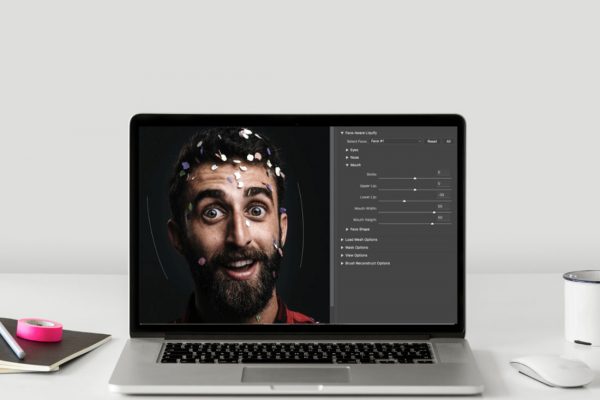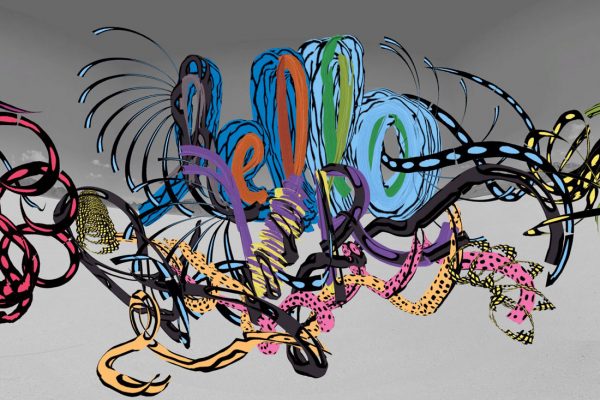Silka Miesnieks, Head of Design Lab at Adobe, talks about immersive design and what the next wave of artificial intelligence will bring to the human-centred design approach.

May 4th, 2018
What is the role of designers in the age of artificial intelligence? What will the next wave of AI bring to the human-centred design approach? Will robots take our jobs? Who better to answer these questions than a person in charge of identifying future tools for designers at one of the biggest (if not the biggest) design software companies in the world? We sat down with Silka Miesnieks, Head of Design Lab at Adobe to find out more.

Silka Miesnieks
What’s your definition of immersive design?
Immersive design is the discipline on how to design things that use all our senses, things that live beyond the screen and in spaces around us. Immersive technologies that enable immersive design are open to reality, virtual reality, voice interface, gesture understanding and they’re all made possible, or made more meaningful, through artificial intelligence.
Today we use search engines to look for images. This visual search is already powered by learning systems –most designers don’t realise that with the searches that they’re making, the search engines are actually understanding what’s in the image. Now they understand images, and even the assigned meaning to that image like ‘a cat’ versus ‘a playful cat’. They understand voice too, and maybe even what a tone of voice means.
So now instead of being limited by text-based information, they allow the flow of information and immersive technologies allow the flow of information of the other senses that we use: our visuals, our auditory, our emotion, our space and time. It will also know where we are so hopefully with privacy parameters – when we want it, the context and the situation, it can respond with more understanding of our intent.
Can you share some of Adobe’s recent research on immersive technology?
At Adobe we built Adobe Sensei, it’s a framework and includes not only AI but also machine learning which is a subset of AI. This framework is what’s starting to power more and more of our products. Because we work with a massive community of very talented designers, we have a massive amount of data. We can learn from the experts and build better tools based on learning from other people. That puts us in this unique position to be able to create better workflows for designers.
We have tools like Lightroom CC which is cloud-based, and it can understand the style you like in photography and help you continue to develop and hone it. It can learn from what you like and then develop filters and systems around that.

Can I ask about the issue of designer/machine authorship on that?
Yes of course. In addition of that, we also focus on making sure the designer is in control – this is a fundamental core belief. We want to accelerate proactivity, but we also want to allow designers to spend more time designing, rather than going through menu systems and toggling toolbars that take you away from doing what you want to do, but we spent a lot of time and a lot of conversation in making sure that we’re not taking away the control
I was about to ask if robots are going to take away our jobs, but – maybe if that happens then our role will evolve into something else, something more important?
The thing that computers don’t do well is that they don’t understand the problem that we’re trying to solve. They’re not good at understanding the problem. Designers are great at looking at a problem, reframing it, looking at it from a different perspective taking in, talking to users, talking to stakeholders, and taking in all that information and using their EQ and also considering the society, and behaviours, and expectations – and all those very complex and subtle nuances depending on the problem and depending on the situation that artificial intelligence is not even getting close to.
So it’s those decision making, value-giving, persuading and negotiating skills that designers use today that are incredibly valuable – in fact even more valuable than it ever has been. And they are not going to go away.
And imagine if we can enable more people to have this sense of creative freedom. Right now you can put on a headset and paint in the whole world around you in three dimensions, and it is one of the most fun thing ever. I know how to draw, but I’ve never been able to do it three-dimensionally, and this enhances the skill I already had and this creative freedom will open up a whole world. It’s going to create new art forms, new ways to create and collaborate – the limit is our imagination.
How do you think this technology will evolve in the future?
I see that in the future this will gain an understanding of our emotions. We watch movies, when the frame zooms into a close-up, we know they’re going to say something intense. And when it’s a wide shot, we understand that we’re meant to see the bigger picture. This creates an emotion. We need this language in immersive design; a language that takes us on a journey as designers to understand this new way of creating that includes our emotion, that includes all our senses that can help everyone communicate.
In your panel discussion ‘Design in the Age of Artificial Intelligence’ at Brainstorm Design you talked about what next wave of AI will bring to human-centred design.
I think human centred design is probably one of the most successful philosophy or approach that has ever come out of a group of designers, because it has been used not just by every individual designer, but it’s being adopted by large corporations to ensure that they’ll be around in the future – they see it as their bottom-line because they will be affected if their product isn’t human-focused.
That is because designers have curious minds and the ability to persuade, they have – in saying that we do have the same responsibilities and abilities that we’ve done, and human centred design is to think about the future and expand on that. And think about more humanity centred design.

I’ve always thought that design is human centred, it’s something planned for humankind. What happened that we actually need to coin a term for it?
I think the terms are coined so then it’s easier for other people to share with other people. I think there has been a crisis in business, ‘Why are people not buying my product?’ How do you answer those questions? Why are people complaining? Or why doesn’t this work? The human centred design approach presents simple steps to answer these questions.
You don’t have to be a designer by title to understand and implement these, in fact there are quite a few centres that have been developing training for management and it’s becoming mandatory in a lot of companies that managers and senior execs actually go through design thinking courses, and make sure that they have people on their team using these principles to help better decision making. And that’s to me is a very positive thing, we’re seeing more responsibility from big corporations on the impact they’re having in their communities and we need to see more of it.
A searchable and comprehensive guide for specifying leading products and their suppliers
Keep up to date with the latest and greatest from our industry BFF's!

Channelling the enchanting ambience of the Caffè Greco in Rome, Budapest’s historic Gerbeaud, and Grossi Florentino in Melbourne, Ross Didier’s new collection evokes the designer’s affinity for café experience, while delivering refined seating for contemporary hospitality interiors.

Sub-Zero and Wolf’s prestigious Kitchen Design Contest (KDC) has celebrated the very best in kitchen innovation and aesthetics for three decades now. Recognising premier kitchen design professionals from around the globe, the KDC facilitates innovation, style and functionality that pushes boundaries.
The internet never sleeps! Here's the stuff you might have missed

Found within the verdant landscape of Jubilee Hills, Hyderabad, Sona Reddy’s design for this authentic Andhra restaurant adeptly fuses textural rhythms with traditional materials.

Landing in the city’s financial district for the first time, The Sebel Sydney Martin Place has had its modern interiors completed by Stack Studio.